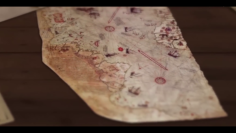Caca Bey
Caca Bey (Nurettin Cebrail), the Emir of Kırşehir and one of the important figures in Turkish history, was an influential statesman during the 13th century Seljuk period and he left his mark on Anatolian history with his political and cultural influence.
Caca Bey stood out as a significant figure that strengthened and consolidated the Turkish presence in Anatolia by showing an important leadership during the establishment of Turkish beyliks in Anatolia and during the Mongol invasions.
In the period of Caca Bey, who spoke a special Turkish in official contexts and used Turkish in state correspondence, the use of Turkish was encouraged and works that contributed to the development of Turkish language and literature were created.
During his period, Caca Bey made significant contributions to education by constructing madrasas that served important roles in science, philosophy, and religious studies. One of these institutions is Cacabey Madrasa, located in the center of Kırşehir, which is now used as a mosque. Cacabey Madrasa, a remarkable example of Turkish-Islamic culture, civilization and architecture, also stood out as an observatory where the movements of the sky, the sun, the moon, and the stars were studied. In the Cacabey Madrasa, which features an open dome and a well beneath it, the reflections of stars in the well were observed and studied.
Cacabey Madrasa, which reveals the advanced state of astronomy, science, and knowledge during the Seljuk and Ottoman periods, was included in UNESCO’s World Heritage Tentative List in 2014, along with other Anatolian Seljuk madrasas.















